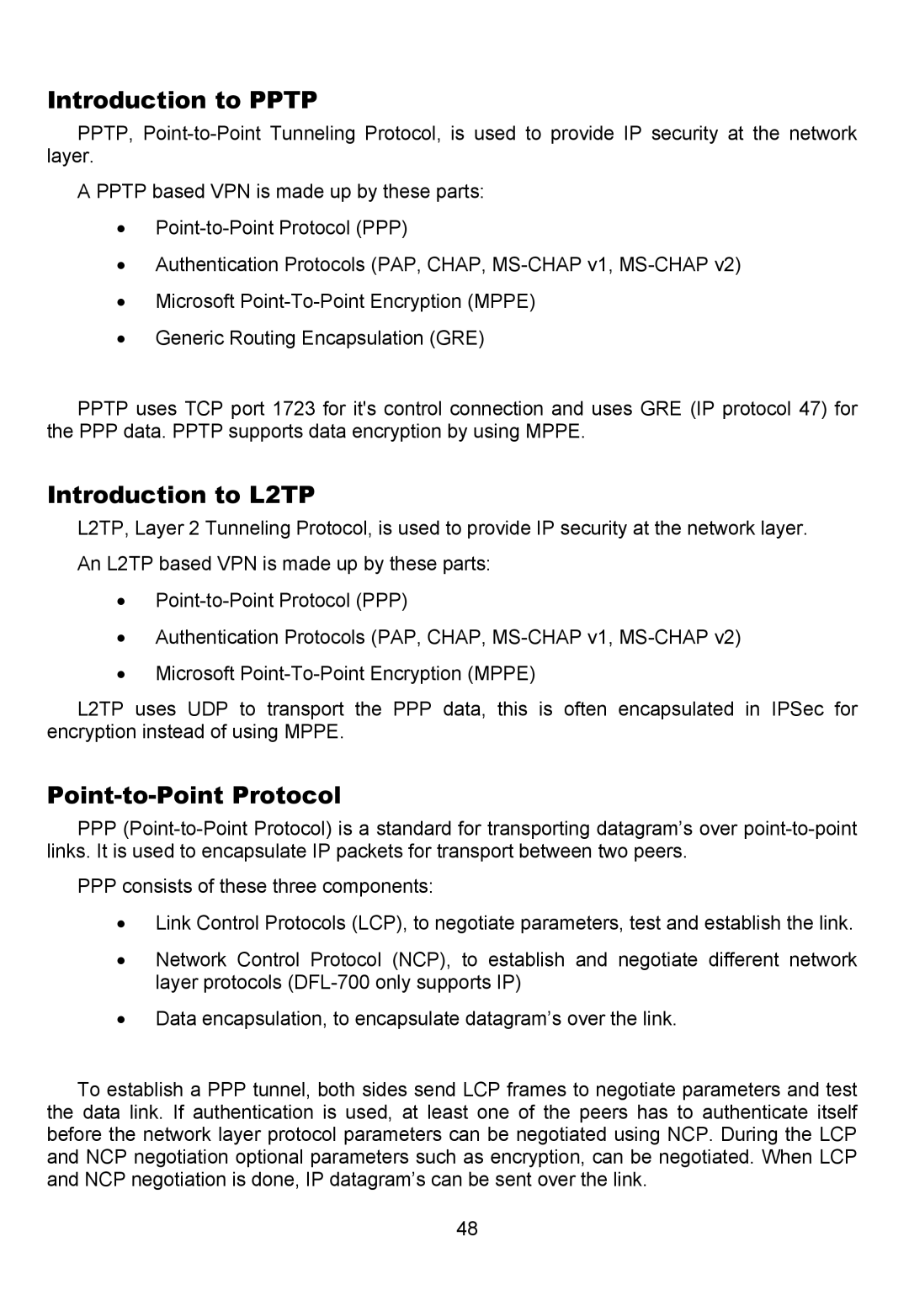Introduction to PPTP
PPTP,
A PPTP based VPN is made up by these parts:
•
•Authentication Protocols (PAP, CHAP,
•Microsoft
•Generic Routing Encapsulation (GRE)
PPTP uses TCP port 1723 for it's control connection and uses GRE (IP protocol 47) for the PPP data. PPTP supports data encryption by using MPPE.
Introduction to L2TP
L2TP, Layer 2 Tunneling Protocol, is used to provide IP security at the network layer.
An L2TP based VPN is made up by these parts:
•
•Authentication Protocols (PAP, CHAP,
•Microsoft
L2TP uses UDP to transport the PPP data, this is often encapsulated in IPSec for encryption instead of using MPPE.
Point-to-Point Protocol
PPP
PPPconsists of these three components:
•Link Control Protocols (LCP), to negotiate parameters, test and establish the link.
•Network Control Protocol (NCP), to establish and negotiate different network layer protocols
•Data encapsulation, to encapsulate datagram’s over the link.
To establish a PPP tunnel, both sides send LCP frames to negotiate parameters and test the data link. If authentication is used, at least one of the peers has to authenticate itself before the network layer protocol parameters can be negotiated using NCP. During the LCP and NCP negotiation optional parameters such as encryption, can be negotiated. When LCP and NCP negotiation is done, IP datagram’s can be sent over the link.
48
